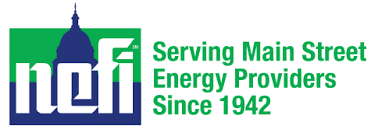SPR Replenishment Encounters Obstacles
Physical constraints and maintenance work at Gulf Coast underground oil caverns are limiting the Biden administration’s ability to capitalize on lower oil prices to replenish the Strategic Petroleum Reserve, Deputy Energy Secretary David Turk told Bloomberg Business. The Energy Department has added 12 million barrels of oil back to the reserve since January, but ongoing challenges have imposed a monthly purchase cap of around 3 million barrels, Bloomberg Business reported.
Following the finalization of contracts for the most recent solicitation of crude oil for the Strategic Petroleum Reserve (SPR), the U.S. Department of Energy confirmed Dec. 1 that more than 12 million barrels have been delivered or secured for purchase or return by February 2024.
Since January of this year, DOE has directly purchased nearly 9 million barrels at an average price of $75 dollars a barrel, it said in a statement. This is about $20 per barrel lower than the $95 average sales price for 2022’s emergency sales, the Administration said. DOE has also successfully accelerated nearly 4 million barrels in exchange returns initially slated for the summer of 2024 to maximize SPR refill. These purchases and exchanges are on top of the 140 million barrels secured for the SPR by working with Congress to cancel previously-mandated sales for Fiscal Years 2024 through 2027.
“The Administration’s ongoing three-part replenishment strategy to get the best deal for taxpayers while increasing SPR stocks is working,” said U.S. Secretary of Energy Jennifer M. Granholm. “The SPR is a critical energy security tool and has proven effective in providing supply to industry and American consumers during times of severe disruption—we are committed to making sure it can continue to serve its mission.”
This milestone underscores the President’s commitment to safeguard and replenish this critical energy security asset. This follows his historic release from the SPR to address the significant global supply disruption caused by Putin’s war on Ukraine and help keep the domestic market well supplied, ultimately helping to bring down prices for American consumers and businesses. Analysis from the Department of the Treasury indicates that SPR releases last year, along with coordinated releases from international partners, reduced gasoline prices by as much as 40 cents per gallon.
The three-part strategy, announced earlier this year, includes: (1) Direct purchases with revenues from emergency sales; (2) Strategic exchange returns that include a premium of additional oil on top of volume delivered; and (3) Securing legislative solutions that avoid unnecessary sales unrelated to supply disruptions.
Additionally on Dec. 1, the SPR released another solicitation for the purchase of up to 3 million barrels of crude for February delivery.
The SPR continues to be the world’s largest supply of emergency crude oil. The federally owned oil stocks are stored in underground salt caverns at four sites in Texas and Louisiana. Through scheduled maintenance periods and the Life Extension 2 program, DOE continues to prioritize the operational integrity and active replenishment of the SPR to ensure it can continue to meet its mission as a critical energy security asset.
For more information on the SPR visit Infographic: Strategic Petroleum Reserve and Fact Sheet: Strategic Petroleum Reserve.

